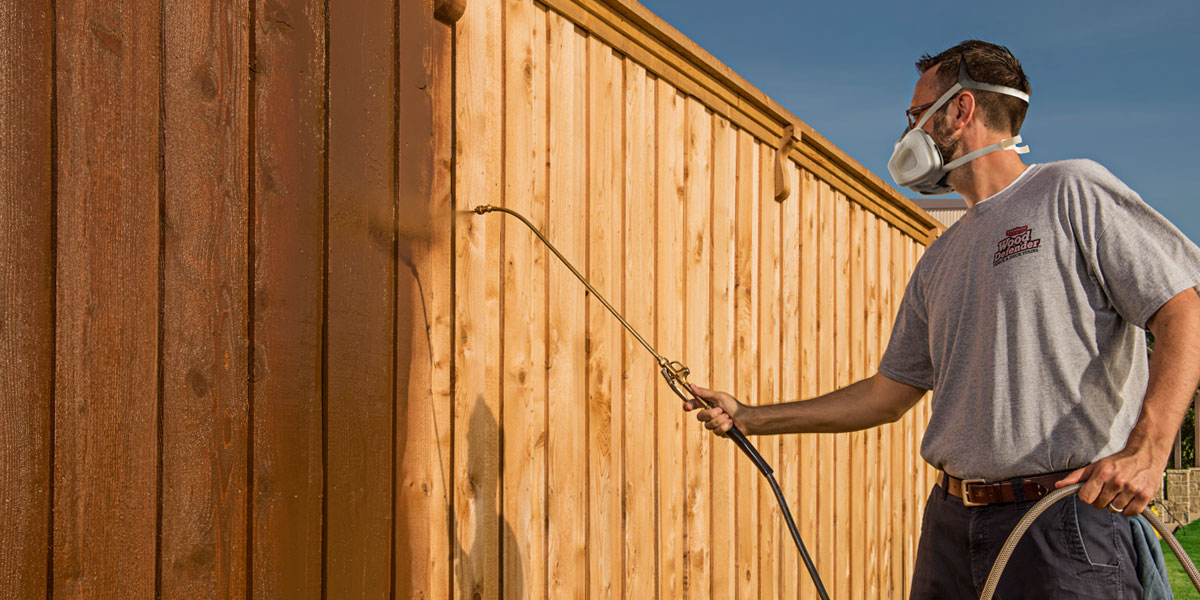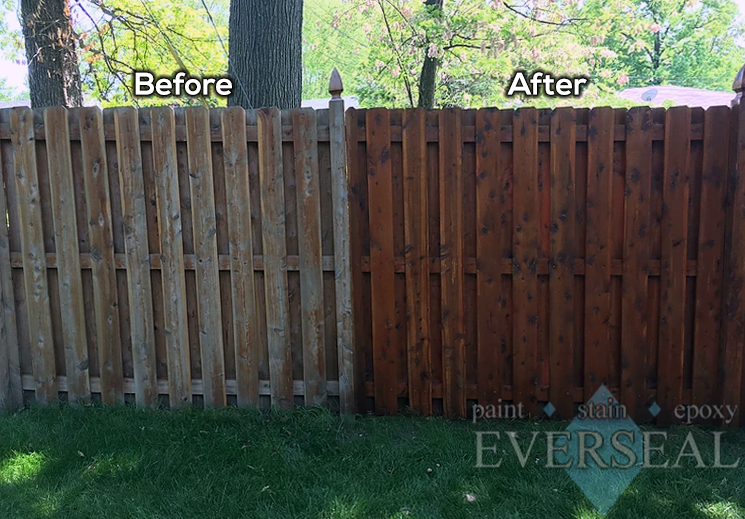Professional Fence Staining Service: Protect and Improve Your Property!
Professional Fence Staining Service: Protect and Improve Your Property!
Blog Article
How to Choose the Right Fencing Stain for Your Building
When it pertains to enhancing the appearance and durability of your residential property's fence, choosing the ideal tarnish is an important choice that needs careful consideration. With a myriad of choices offered out there, each satisfying various wood kinds, shades, and transparency levels, the procedure can swiftly come to be frustrating. Nevertheless, making an informed selection can considerably affect the general aesthetic appeals and longevity of your fencing. So, exactly how can you make sure that you pick the best fence discolor that straightens with your home's style and maintenance needs? Let's discover some key variables to guide you in this decision-making procedure.
Understanding Timber Kind
To pick the suitable fence tarnish, it is important to have a comprehensive understanding of the different kinds of timber typically used for fencing. When picking a fencing discolor, it is crucial to consider the type of wood being used to make sure compatibility and ideal defense. Recognizing the attributes of various wood types will aid you make an educated decision when it comes to choosing the right fencing discolor for your property.
Selecting the Right Color
Choosing an ideal shade for your fencing discolor is an important decision that substantially affects the total aesthetic charm of your residential or commercial property. The color you pick must enhance the design of your home, blend harmoniously with the environments, and mirror your personal preference. When selecting a shade, think about the existing color combination of your home. For an all-natural look, natural tones like browns, environment-friendlies, or grays work well. These shades can aid the fencing blend into the landscape and develop a cohesive appearance. If you like an even more modern-day or strong look, take into consideration choosing darker tones like black or deep charcoal for a striking comparison. Lighter shades such as whites or light grays can make a fence appear larger and include a touch of beauty to your building. Inevitably, the right shade option will certainly improve the beauty of your fencing and elevate the overall curb appeal of your home.

Taking Into Consideration Transparency Degrees
When selecting the best shade for your fence stain, one more important aspect to think about is the level of transparency that will certainly ideal suit your home's aesthetic and upkeep demands. Transparency levels in fencing discolorations normally fall under three categories: transparent, semi-transparent, and solid. Transparent spots allow the natural charm of the wood to reveal with while supplying marginal defense versus the elements. They are suitable for brand-new or well-maintained fencings where showcasing the wood grain is a top priority. Semi-transparent discolorations use an equilibrium in between color enhancement and security, allowing some wood grain to be noticeable while giving modest shielding from UV rays and wetness. Strong spots, on the other hand, provide one of the most protection as they totally cover the timber with a nontransparent coating. These are ideal for older fences or those looking for substantial defense or color modification. Take into consideration the degree of exposure your fence faces, the desired upkeep frequency, and the visual you want to accomplish when choosing the best transparency degree for your fencing stain.
Examining Upkeep Requirements
Thinking about the durability and upkeep of your fencing, evaluating the upkeep demands is vital in establishing one of the most suitable fencing discolor for your residential property. The level of upkeep required for your fence can vary relying on aspects such as the kind of wood, weather in your area, and your personal preferences.
When assessing upkeep demands, it is important to take into consideration the durability of the fence stain. Some spots call for even more frequent reapplication than others, so selecting a discolor with a longer life-span can help decrease the total maintenance demands of your fencing (Fence Staining). Additionally, factors such as resistance to UV rays, water, and mildew can impact how typically you require to re-stain your fencing

Examining Examples Before Application
Prior to applying any kind of fencing stain, it is a good idea to perform example examinations to make certain compatibility with the timber and desired aesthetic end result. Testing samples permits you to analyze just how the discolor will certainly engage with the particular type of timber made use of in your fence, as various woods can absorb stains in a different way. To begin, check out here choose a small low-profile area of the fence to apply the stain examples.
Final Thought
In verdict, picking the ideal fence stain for your home involves comprehending the wood type, choosing the ideal shade, thinking about openness levels, assessing upkeep demands, and screening samples prior to application (Fence Staining Service). By taking these aspects into factor to consider, you can ensure that your fence tarnish matches your residential property while providing the necessary security and longevity. Make a notified decision to improve the appearance and longevity of your fence
Report this page